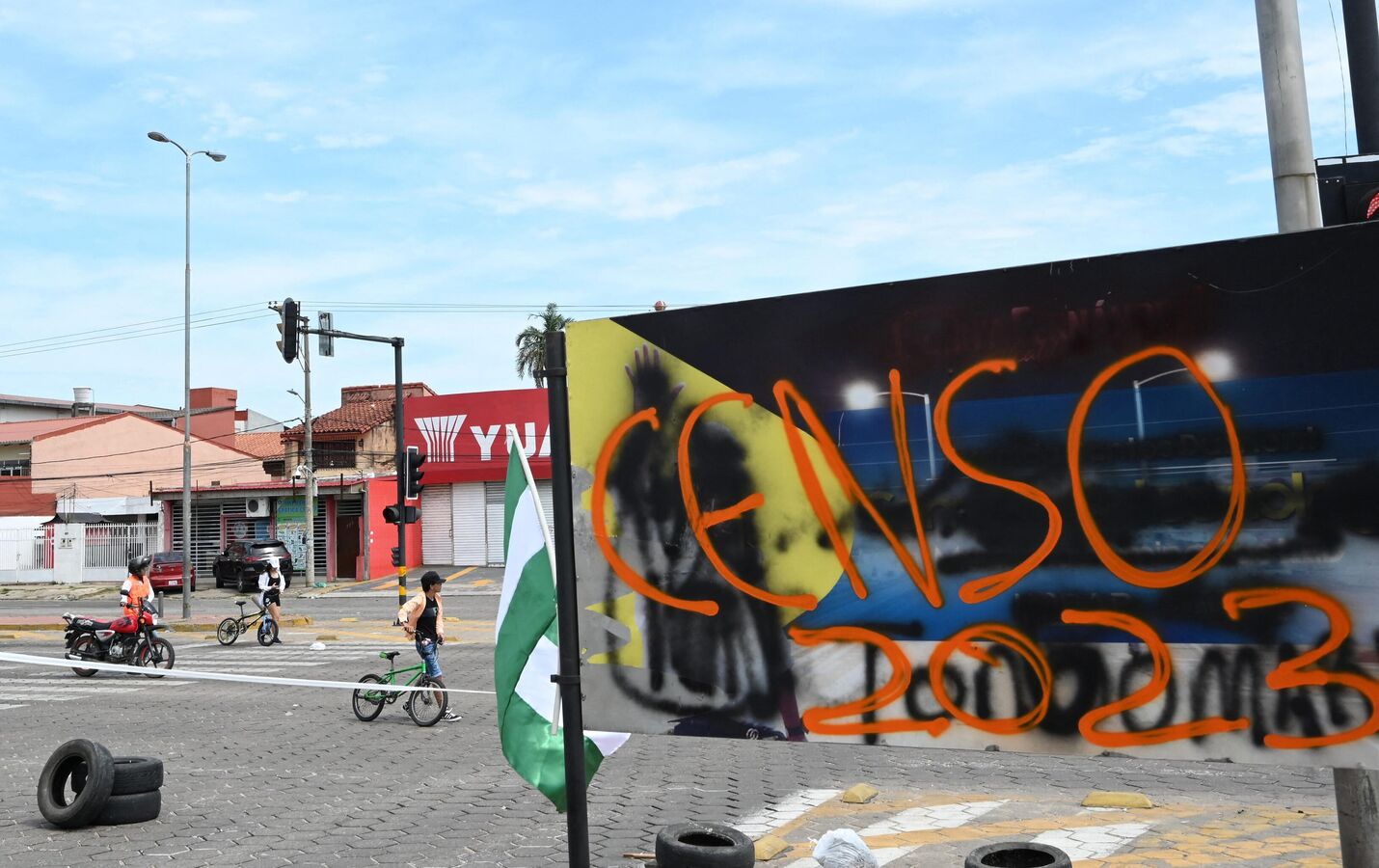The department of Santa Cruz noted its relevance to the rest of the country, which is already suffering from the increase in food prices, after several days of indefinite strike in claim for the date of the census. Although civic protest languishes, the damage to the national economy is serious. “A fairly complex scenario is coming,” an analyst told Sputnik.
The indefinite strike that began on October 22 in Santa Cruz will have negative effects on the country’s economic growth, assured the Ministry of Economy. What happens in this department inevitably has repercussions throughout Bolivia, because it is where 76% of all food is produced, according to the Bolivian Institute of Foreign Trade (IBCE).
Read also: Check out our coverage on Bolivia
Since November 5, a technical group has been operating in the city of Trinidad, capital of Beni, made up of officials from the National Institute of Statistics (INE), the Government of Luis Arce and the eight departments of Bolivia —all except Santa Cruz—, plus the rectors of universities in the country. They calculate that in the next five days they will have a definitive date for carrying out the population and housing census.

The Santa Cruz authorities demand that this study be carried out in 2023. But the national government proposes that it happens in 2024. Whatever the date that is finally resolved in Trinidad, the mobilizations in Santa Cruz seem to calm down. The fence that peasant indigenous organizations maintained in all accesses to the city has already been lifted, while the technical table negotiates.
The blockades of Santa Cruz residents on various avenues in the city are also waning after 17 days of continuous presence on the streets, representatives of local social organizations told Sputnik.
The Ministry of Economy announced that the first 14 days of the strike caused losses of US$500 million. The economist Mike Gemio agreed that these numbers will affect the Gross Domestic Product (GDP) this year.
“We are an economy of US$43 billion, approximately. US$500 million is just over 0.25% of GDP, so we already have a very serious impact, the economy is slowing down,” Gemio told Sputnik.
According to the IBCE, 52% of Bolivian exports come from Santa Cruz. “The third most relevant product in income generation is soybeans,” which is grown mainly in that department, explained Gemio.
“There will be an impact on the large numbers of GDP, but the inflationary record may also suffer a variation, due to the amount of food produced by Santa Cruz. A fairly complex scenario is coming,” the economist warned.
THE ARMOR IS WEAKENED
Since the beginning of the conflict in Ukraine, in February 2022, most countries on the planet have entered into inflationary spirals that do not give in. Some members of the European Union reached inflation rates of 10%.
But Bolivia was able to remain isolated from this context, to the point that its inflation rate was among the lowest in the world.
According to the Ministry of Economy, more than two weeks of unemployment in Santa Cruz generate “negative consequences not only in economic growth. It will also have a negative impact on the labor market, foreign trade, tax collections and inflation”, which in this year it accumulates an increase of 2.52%.
Until June 2022, Bolivia had an increase of 4.13% of its GDP. It was predicted that by the end of the year a growth of 5.1% would be registered, but reaching that figure is already “very difficult”, according to the IBCE.
For Gemio, the damage to the Bolivian economy is not justified solely by the protests over the census. In this sense, he considered that the indefinite strike “has a more political origin, which is not directly related to the Government’s management capacity. Rather, it is aimed at hindering what is done effectively, as is the case of inflationary control.”
THE CROSSING SITUATION
Emilio Rodas is part of Columna Sur, a Santa Cruz organization that supports the Arce government. In dialogue with Sputnik, he said that the situation in the city “is calmer compared to the previous week, when there was a lot of accumulated tension.” This was manifested in the clashes in the municipality of La Guardia between those who defended the civic strike and those who wanted to continue working normally, on November 1st.
“In roundabouts and streets we have blocking points set up by extremely violent people. You can’t talk to them and that makes the situation much more complicated,” said Rodas.
For the resident of Santa Cruz, the 17 days of strike revealed “two totally different realities. In one reality there are affected people, merchants, unions, carriers who cannot earn their daily livelihood.”
The second reality “is caused by the bubble generated by the media, which show the strike as if there were no dissent, where there are no contrary voices. They show us as if all of Santa Cruz supported the strike, but it is not like that.”
After the effervescence of the first weeks, now “it is a much more symbolic strike, because many people are already going out to work, the markets and businesses are open and there is even public transport.”
For Rodas, the civic strike languishes, regardless of the result obtained by the Trinidad technical table: “If those who called it do not lift it, the strike will also end. People no longer stay at home, because they need to work.”
With information from Sputnik (Sebastián Ochoa)

